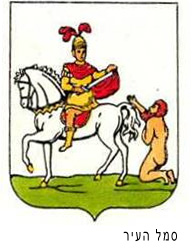Berehove or Bergsas (Yiddish: בערעגסאס) is a town in western Zakarpatye, near the Ukrainian border. Today it boasts about 26,000 inhabitants. About half of them have Hungarian roots, and the rest are Ukrainians, Roma, and Russians.
The Berehove Jewish Community
There is evidence of Jewish existence in Berehove as early as the 17th century, while an organized community existed since the 18th century. The community reached its zenith in 1867, with the application of the Law of Equal Rights for Jews. From that period until the beginning of World War II, Jews were the backbone of the city’s commercial and economic life. There were Jewish educational institutions and Talmud Torah in Berehove, and almost every Zionist youth movement operated in town. On the eve of the Holocaust, the Jewish community numbered some 8,000 Jews.
Town Rabbis
The first town rabbi was Rabbi Yitzchak Rochelitz. The second rabbi, who served since 1861, was Rabbi Avraham Yehuda Leib Hacohen Schwartz – a disciple of the Chatam Sofer
Rabbi Shlomo Schreiber Soffer was the rabbi of the city since 1883. He was the son of the Katav Soffer and grandson of the Chatam Soffer, and was famous for his writings about his family – Igrot Soferim and Chut HaMeshulash. His son-in-law, Rabbi Shlomo Hirsch, was the last rabbi of the community, until his murder in the Holocaust with the Jews of Berehove. At the end of the 1930s, Rabbi Aharon Roth established his residence in Berehove until his immigration to Israel in 1940. His disciple Rabbi Yosef Meir Polack continued to lead his followers after their rabbi immigrated to Israel. Rabbi Yosef Meir Polack was murdered in the Holocaust, and his descendants established the Bergsas Chassidic Court in Israel.
The Holocaust
The fate of the Jews of Berehove was similar to that of their brethren in Hungary in general, and in the Carpatho-Rus in particular. In 1938, upon the signing of the Vienna Agreement, the city of Berehove moved from the rule of the Republic of Czechoslovakia to the rule of Hungary. In 1941, hundreds of city residents who could not prove that they were Hungarian citizens were deported to Poland. Most of them were murdered in Kamenec Podolsky together with thousands of Jews from other Hungarian towns.
Since 1942, almost all Jewish men have been recruited for forced labor in the Hungarian army, which fought alongside the Germans on the eastern front. Most of the recruits perished during their service from torture, cold and hunger. In March 1944 the German army conquered Hungary. The remaining members of the community, elderly women and children, together with the surrounding Jews, were gathered at the brick factory near the train station. In May 1944, 1,200 Jews were taken in three transports to the Auschwitz death camp, where most of them perished. Some 1,000 Jews from the town survived the Holocaust.
